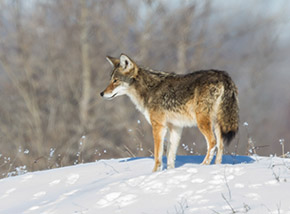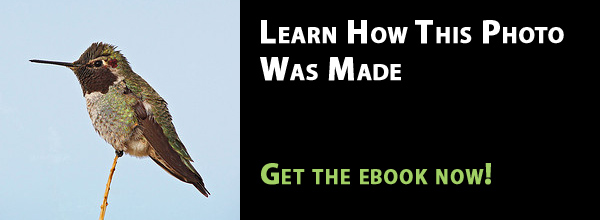
The coyote has adapted so well that they’re considered pests in some areas. As a result, many aggressive hunting campaigns have been launched against them. But, in spite of this, they continue to thrive.
So, what can the coyote teach you about nature photography?
Well, one of the reasons that the coyote has survived so well is that they’re opportunistic hunters. That means they’ll eat whatever’s plentiful. If it was a good year for mice, they’ll eat a lot of mice. If it was a good year for rabbits, they’ll eat rabbits. They even have a large vegetarian portion of their diet.
So, instead of being dependent on one source of food like many mammals (such as the endangered Kit Fox which pretty much ONLY eats Kangaroo rats), the coyote varies their diet so they can survive on pretty much anything.
You can apply this same strategy to nature photography: instead of targeting one subject when you go out for a hike, you can be more open and focus on whatever’s plentiful.
If it was a good year for wildflowers, then it might be a great opportunity to find one with a perfect background. Or, maybe it’s the time of year when some birds are migrating through your area—might be a perfect opportunity for photographing a rare bird.
If you hike the same trail often every year, then you’ll see some really interesting trends. One year, there might be a ton of squirrels, and another year there might be a ton of lizards, or one specific species of flower (and the next year you won’t see any).
Unlike other types of photography, with nature you often won’t be able to photograph what you set out to photograph that day—either because of weather, the time of year, or maybe it just wasn’t a good year for that subject you’re after. So, adopting a more “opportunistic” approach to nature photography will usually result in a lot more photo opportunities.
This approach also makes nature photography much more relaxing, because instead of focusing on one subject (and then getting disappointed when you don’t even see any that day), you focus on anything that’s interesting—and as I’m sure you know, there’s always something interesting happening in the wild 🙂
Get more great tips in our free weekly newsletter.
 About the Author: Steve Berardi is a naturalist, photographer, software engineer, and founder of PhotoNaturalist. You can usually find him hiking in the beautiful mountains and deserts of southern California.
About the Author: Steve Berardi is a naturalist, photographer, software engineer, and founder of PhotoNaturalist. You can usually find him hiking in the beautiful mountains and deserts of southern California.

Leave a Reply